The ABS yesterday released its property price data for the March quarter, which valued Australia’s dwelling stock owned by households at a record $6.27 trillion dollars.
As shown below, the total value of Australia’s dwelling stock was an all-time high 7.7 times employee incomes as at March 2017, up massively from the previous peak of 6.90 times incomes in 2010:

Similarly, the ratio of dwelling values against Australian GDP hit a record 3.64 times as at March 2017, up from the previous peak of 3.30 times GDP in 2010:
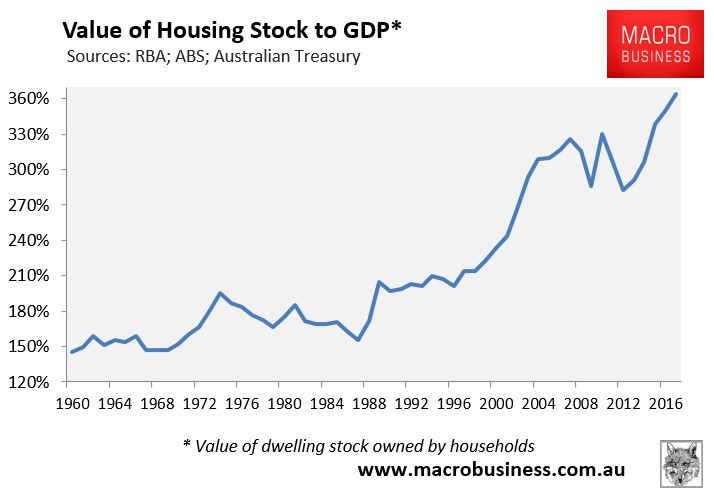
When divided by Australia’s population, Australian housing was worth a record $257,000 per man, women and child:
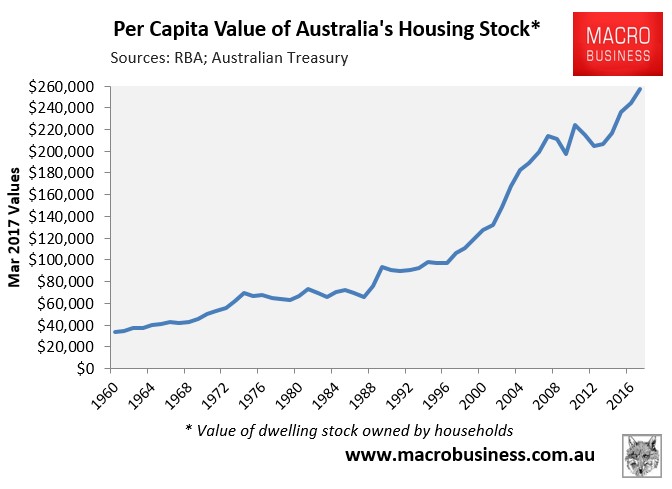
Australia’s house prices are also showing a record divergence from rents:
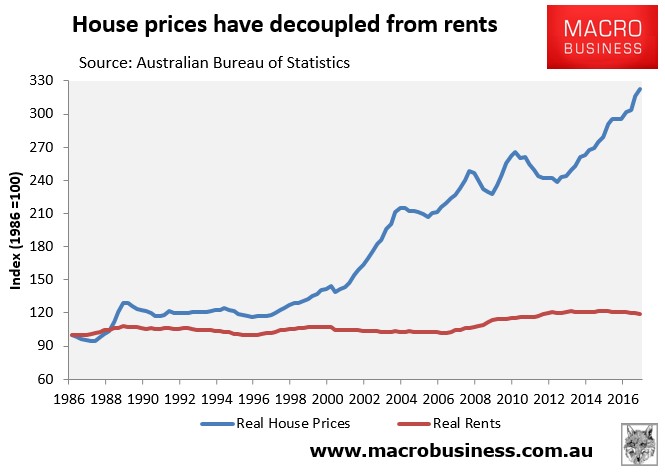
In fact, since Australian house values bottomed in September 2012, prices have risen by 36% in real terms versus no change (0% growth) in real rents.
Another way of measuring potential over-valuation in the housing market is to compare house prices against their earning capacity, as measured by gross rents, to determine the price-to-rent ratio. This is calculated as the inverse of the rental yields averaged-out across Australia’s three major data providers.
While the ABS doesn’t keep data on rental yields, CoreLogic, Domain and Residex do, and these are averaged-out below:
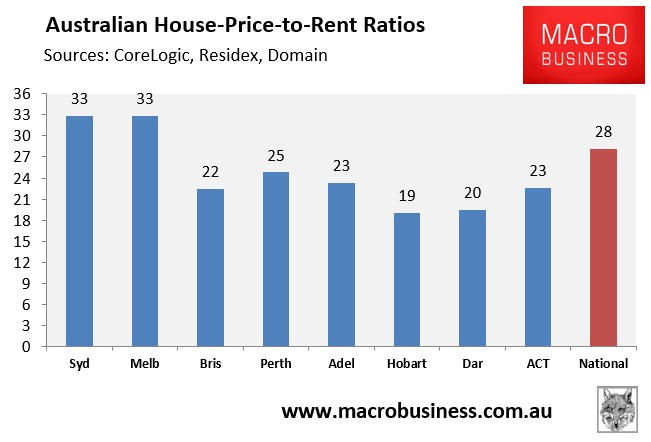
As you can see, Australia’s house price-to-rent ratio is an insane 28 times, driven by the bubble epicentres of Sydney and Melbourne (each 33-times rents).
Finally, the debt underpinning Australia’s housing values is also at the highest on record, the highest in the Anglosphere, and the second highest in the world (behind Switzerland):
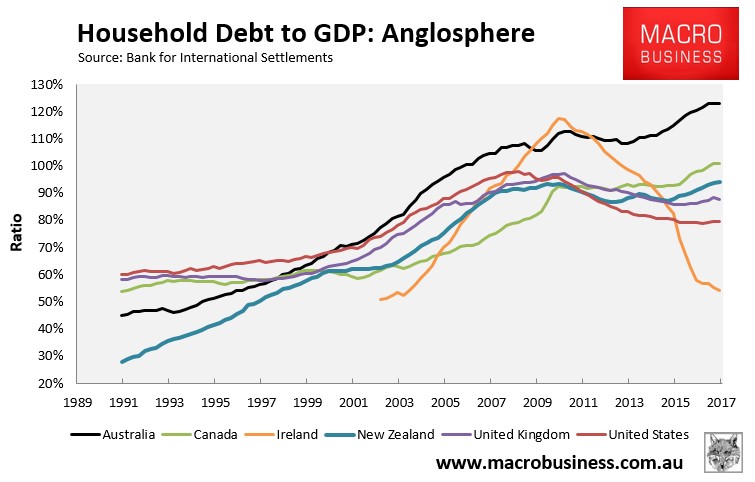
No matter which way you cut it, Australia has itself one helluva housing bubble!

